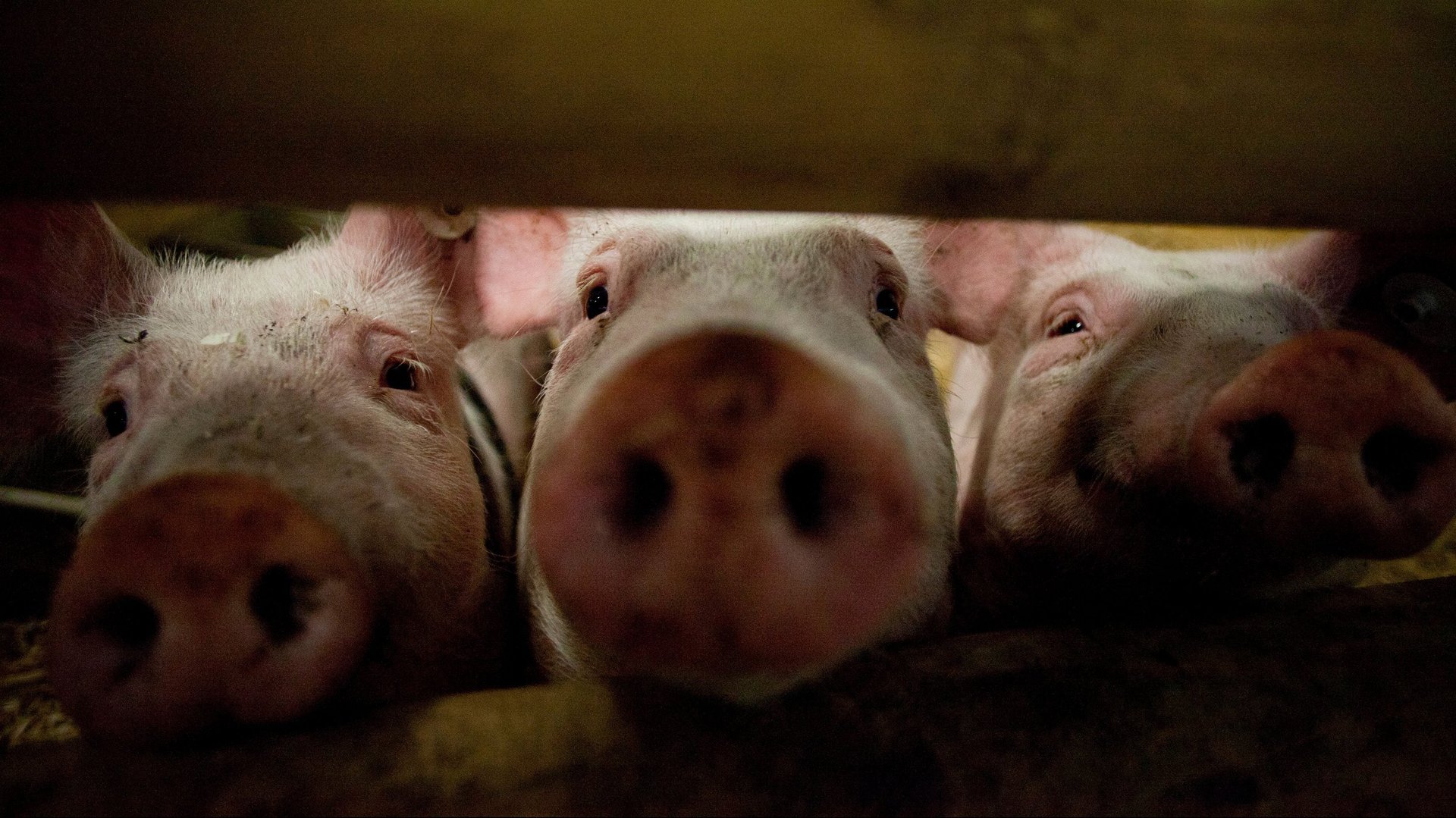Here’s a “win-win” trade concession China can make to the US right now
If there is one thing that China’s leaders like, it’s a “win-win” deal. As they prepare to go into trade talks with the US early next month, there’s one American product that truly falls into that category.


If there is one thing that China’s leaders like, it’s a “win-win” deal. As they prepare to go into trade talks with the US early next month, there’s one American product that truly falls into that category.
China’s hog prices have gone up 130% since January this year, according to Zhue, a Chinese industry website that tracks the country’s hog prices based on data collected from hog farmers and vendors. The surge in prices is due to an outbreak of African Swine Fever, a disease lethal to pigs but harmless for humans, that began in August last year. Farms have had to slaughter tens of millions of pigs to prevent the epidemic, leading China’s herd count to shrink by nearly one-third as of July, according to Reuters.
In August alone, the price of China’s most consumed meat went up nearly 50% in price in August. And prices are only predicted to go up further before the end of the year.
Pork is not only a food staple, but also a symbol of prosperity in China—which is currently marking the year of the pig, according to the Chinese zodiac. Already, there have been laments on Chinese social media platforms like Douyin about the increased pork prices, adding to the other economic pressures the ruling Communist Party faces—a steady supply of affordable pork is essential to maintain social stability.
While bad news for China’s consumers, the surging price of hogs could bode well for US hog farmers, who had been hoping ahead of the 2016 election to increase sales to China, even discussing adjusting the use of a feed additive banned in China to improve market share. But those hopes were dashed after Donald Trump’s took office. US pork, originally under 12% tariffs, has seen duties go to a total of 72% as Beijing imposed retaliatory measures in response to successive US tariffs from last July on Chinese goods. The latest increase was a bump of 10% at the start of this month.
China was the third largest export market for US pork in 2018, following Japan and Mexico. However, the volume of US pork exports in metric tons to China (including Hong Kong) last year saw a nearly 30% drop compared with 2017. The value of pork exports also declined to $852 million that year, from $1.1 billion in 2017, prior to the new Chinese tariffs, according to data from the US Meat Export Federation.
China has been grappling with how to contain the price increases, including importing more pork from countries like Brazil and Denmark, as well as tapping its emergency pork reserves. But the measures will not be enough, according to analysts. Lei Yi, analyst at China Merchants Securities, told Hong Kong-based newspaper the South China Morning Post that China has a “supply gap of over 10 million [metric tons]” of pork, while the country’s entire frozen pork reserves only amount to around 990,000 metric tons.
After the US said it would delay a tariff increase from Oct. 1 by two weeks because of China’s national celebrations, Beijing announced on Friday (Sept. 13) it will exempt some US agricultural goods (link in Chinese), including pork and soybeans, from additional tariffs. It hasn’t clarified whether goods will be exempted from the 10% tariffs imposed the month or see a deeper rollback—with a state-run news announcement on the exemption suggesting the exact amount could be a bargaining chip in upcoming talks.
“China has a huge market, and there is great potential for high quality US agricultural goods,” said Xinhua when it reported the news, citing official sources. “China hopes the United States will be true to its word, make progress on its commitments and create favorable conditions for bilateral agricultural cooperation.”
Rolling back these tariffs to where they were before the trade war would be welcomed as a concession to the US—one midwestern US economist estimates that every 1% increase in Chinese consumption of US pork is equal to 5% of US production—but would be just as much to China’s favor.
US pork exports to mainland China have nearly doubled in the first seven months of this year, compared with the same period last year. Exports for July topped 44,000 tons (40,000 metric tons), compared with under 8,000 last July. But China’s tariffs are making these imports more expensive than they need to be—at a time when it should be doing everything it can to make pork cheaper.